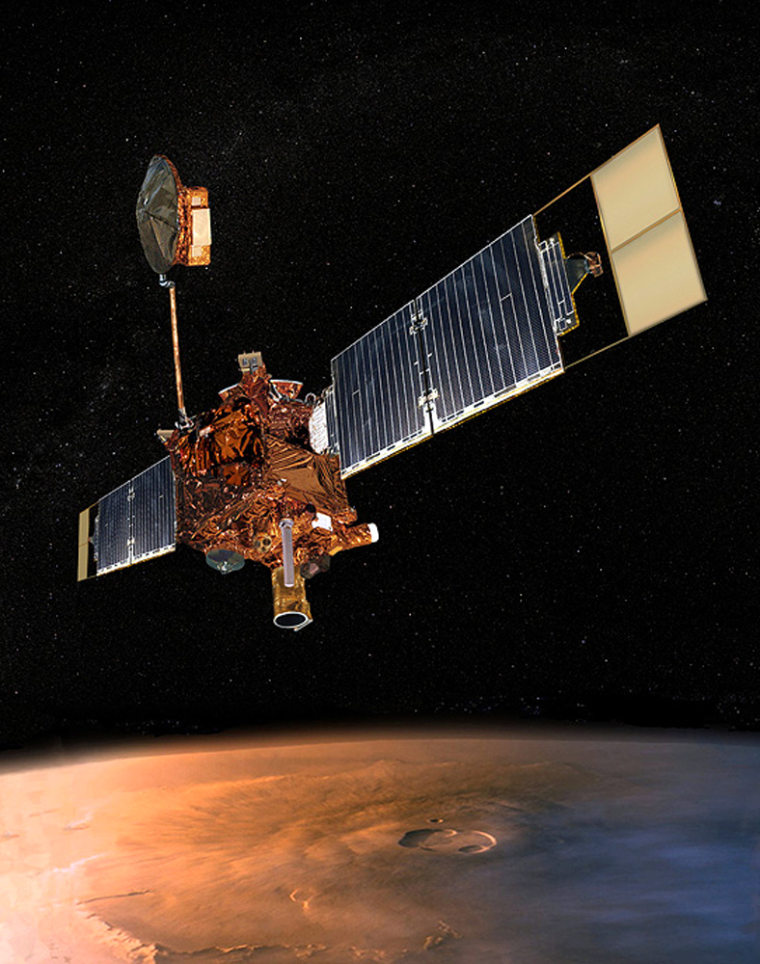NASA's Mars Global Surveyor spacecraft has failed to check in with Earth for the fifth straight day in a row, after losing contact during a routine adjustment of its solar array.
On Nov. 2, Global Surveyor's managers sent commands for the spacecraft to adjust the position of one of its solar power arrays to better track the sun. Returning data indicated a problem with the motor that moves the array, so a backup motor and control circuitry were switched on.
No signal was received on Nov. 3 and 4, but a weak signal was received on Nov. 5, suggesting the spacecraft had switched to a safe mode and was awaiting further instructions from Earth. The signal cut out completely later that day and nothing has been heard since.
Engineers think the spacecraft has performed a programmed maneuver in which it turns its solar arrays toward the sun to maintain its power supply. When it does this, it also reorients its entire body in the same direction, thus making communication with Earth less effective.
"The spacecraft has many redundant systems that should help us get it back into a stable operation, but first we need to re-establish communications," said Global Surveyor project manager Tom Thorpe of NASA's Jet Propulsion Laboratory in Pasadena.
Mars Global Surveyor launched toward Mars just over 10 years ago, on Nov. 7, 1996, and helped mark NASA's successful return to the Red Planet, along with the Mars Pathfinder probe. The orbiter was originally tasked with examining Mars for a full Martian year, roughly two Earth years. Operations were slated to end in early 2001, but like the two Mars rovers, Opportunity and Spirit, the orbiter continued to perform so admirably that its mission was repeatedly extended, most recently on Oct. 1 of this year.
Since its science mission formally began in 1999, Mars Global Surveyor has returned a wealth of data about the Red Planet. The spacecraft has tracked the evolution of a dust storm, gathered information on the Martian landscape, found compelling evidence of gullies apparently carved by flowing water, and revealed the infamous "Face on Mars," originally photographed in 1976 by Viking 1, to be nothing more than a natural landscape. It has also taken tens of thousands of high-resolution images of Mars and performed the first three-dimensional mapping of the planet's north pole.
